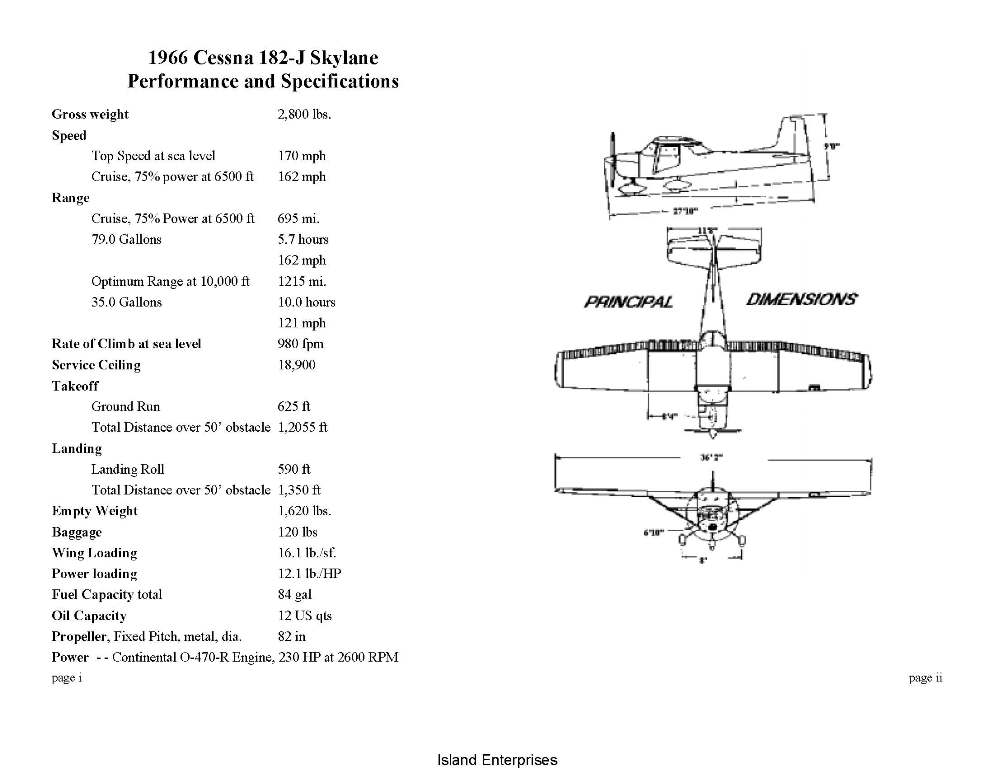Table Of Content

Cessna 172 Skyhawk – The Cessna 172 features a fixed tricycle landing gear. This design simplifies operations and reduces maintenance costs since there are no retractable parts. It was in 1958 that the Cessna 182 achieved the nickname Skylane when a deluxe version of the aircraft was put on the market. The upgrade came with wheel pants, standard radios, and a full paint job.
Cessna 182 Skylane
On long-haul flights, the pilot may ask air traffic control to climb from one flight level to a higher one, in a manoeuvre known as a step climb. Load-carrying capability is great with a useful load of 1170 pounds. We routinely operate out of grass airstrips and, in a pinch, with 20 degrees of flaps, the aircraft will break ground at 45 knots. The landing gear is very durable and we dont have to worry about wheel pants getting damaged.
Wingspan
Sling High Wing: the new Cessna 182? : : FLYER - FLYER magazine
Sling High Wing: the new Cessna 182? : : FLYER.
Posted: Mon, 17 Oct 2022 07:00:00 GMT [source]
Although these changes only brought the weight of the aircraft up by 10 pounds, climb, takeoff performance, and its service ceiling were all reduced. This is because a heavier aircraft should fly faster to generate the required lift at the most efficient lift coefficient. ECON speed will also be higher at higher altitudes because the density of the air is lower. Cessna dropped their problematic bladders in 1978 and in ’81 boosted gross weight up to a clean 3100 pounds. This 182R saw an increase in fuel capacity up to 88 gallons and an upgrade to a 28-volt electrical system. They came out with a turbocharged version called the T-182RII which was powered by a Lycoming O-540 before ceasing production in 1986.

Takeoff distance ground roll
The O-540 is prone to a greasy bottom but a properly installed Airwolf oil separator has helped tremendously. This was more of a necessity than anything, given the frequency of expensive firewall repairs after banging the nose to the pavement. Although this problem has persisted throughout the production life of the 182, Cessna has yet to fully eliminate the need for extra caution. However, adjustments made to the landing gear over time, as well as reputational awareness among pilots, have contributed to the gains made by Cessna in this regard. Comparisons are not made between the R182 and the Bonanza, which pilots do not consider a lower-priced choice in the used market.
Boss 182 Standard Configuration Includes:
The Skylanes reliability and handling have made it almost impossible to find someone who dislikes the design. This has led to stall speeds remaining the same across the board 54 KCAS when clean and 49 KCAS when configured for landing. Pilots who dont use as much rudder to help roll out of a turn as they used rolling in will wallow all over the sky. (They never seem to notice how far the ball slid outside the cage.) The RG likewise needs nimble and firm rudder work on and near the runway to keep the nose straight on takeoff and in crosswinds. No wonder the model sold well initially, until the industry hit a brick wall within a few years of the retractable Skylanes introduction.
To give an example, the cruise speed of Cessna 182 Skylane flying at 500 meters against the wind of 30 km/h will equal 239 km/h. If there is a side wind, the speed will vary between 239 and 299 km/h, depending on whether it’s more against or with the wind. The Collins stack was costing a fortune to maintain and I felt it was too much of a liability for IFR so we installed a Garmin stack. Two doors and a wide cabin are important as we make many trips with our two golden retrievers. Many of our trips are of the 400- to 900-mile length so speed is important. TAS at 23 squared and about 13 to 13.5 GPH runs about 156 to 158 knots at 10,000 feet.
They cruise comfortably and quickly with a max cruise speed of 145 ktas. They aren’t the fastest plane on the market, but they certainly aren’t the slowest. If you’re like most people who fly behind turbos, you may prefer to operate at non-oxygen altitudes—typically 11,500 or 12,500 feet. At these heights, you can expect about 160 knots true on 14 gph. Any pilot willing to strap on a mask and high jump to the flight levels will find the basic speed advantage is an extra 15 knots of cruise. Those who’ve explored the airspace above 14,500 feet, however, know that there are other benefits to high flight.
Coflytcom Intelligent Aircraft Management Software For Pilot Peace Of Mind
The last thing anyone needs during a go-around is a new set of sight pictures and performance anomalies. Pushing the mixture to the full rich position prior to let down is not necessary. You’ve set the mixture for cruise power and as you reduce power, the amount of fuel needed for combustion will go down.
These additions often equate to a smoother ride and increased performance, but come with the downside of an increased overall cost. It is worth mentioning that not all models of the 182 offer a retractable gear so choosing one that doesn’t may help in the long run. Just like the 172 the 182 has nearly 25 variants all ranging from military to complex (with retractable gears). And that’s one of the most appealing things about the 182, increased variety and the same platform as the 172 offerings a plethora of parts and reliability. The newer variants have landing gear retraction, increased fuel economies, with reduced maintenance costs.
To show this, again using the performance chart provided by Cessna, I plot the advance ratio as a function of coefficient of lift (see Figure 2). High speeds correspond to small values of coefficient of lift and vice versa. This practice lessens noise since the prop is not “revved up” under power, nor do the passengers feel the rpm surge that’s part of pushing the prop control full forward while under power.
All later Cessna retractable singles (the Cardinal, Skylane and Cutlass) swing the wheels back into simple wells. Speed loss by eliminating the gear doors was only two knots, and the reduction in headaches with gear doors proved well worth the change. Thanks to the type’s good safety record and reliability, the Cessna 182 often gets fairly reduced insurance quotes compared to its competitors. The FAA has issued an airworthiness directive (AD) mandating more fuel drains on each tank, but the bill is expensive for aircraft that have not had this work done already.
We have disassembled the powerpack a few times and have only replaced O-rings and fluids. We have disassembled the main gear actuators and cleaned and inspected them. We found one of the sector gears had been installed backwards with only two gears holding the landing gear up. We replaced O-rings, reassembled and installed, per a service bulletin, safety wire to the mount bolts. We cruise at 2200 RPM and 22 inches or full throttle at higher altitudes for approximately 65-percent power and plan on 14 GPH for the first hour and 12.5 GPH at cruise altitude.
In 1972 low-speed handling was improved further by adding a leading-edge cuff, extending the dorsal fin, and shock-mounting the cowling. This model (182P) stayed in production for 4 years, outlasting each of its predecessors. Another benefit to a constant-speed propeller is that if your engine fails, you can pull the prop lever back to reduce pitch and feather the propeller, which will reduce drag. This gives you more glide time to get yourself and your plane to safety. Even though this is a variable topic, it is still worth mentioning.
In 1962 Cessna released the 182E, which contained a wider fuselage and a slightly lower cabin, making more room for passengers. It also came with electrical flaps, an updated panel, and a trim tab stabilizer. Gross weight increased to 2800 pounds with the installation of a different engine, an O-470-R, as well as bladders and auxiliaries added to the fuel system.
The Cessna Flyer Association is a proudly independent group of and for Cessna© owners and pilots. The governor reduces blade pitch to maintain rpm until the blades are in the high rpm position and rest against the low pitch stop in the prop hub. According to the manufacturer’s printed bulletins, Continental engines can be leaned to peak EGT at 65 percent power and below; Lycomings at 75 percent power and below.

No comments:
Post a Comment